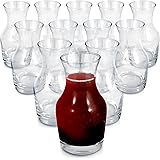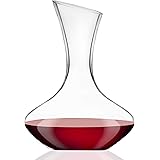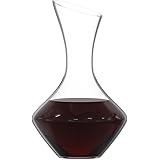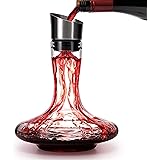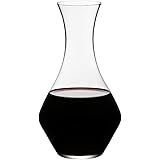Exploring the World’s Wine Regions: Your Guide to Climate and Style
Embarking on a journey through the world’s most renowned wine regions offers an unparalleled experience, blending culture, scenic beauty, and exquisite flavors. Deciding where to uncork your next adventure can feel daunting, especially with such a vast array of choices available.
As the video above highlights, understanding your personal wine preferences is the crucial first step in selecting your ideal destination. The fundamental principle connecting a region to its signature wine style often boils down to one critical factor: climate.
The Climate Connection: How Warmth Shapes Wine Characteristics
The climate of a vineyard plays an incredibly significant role in defining the character of the wines produced there. A simple yet powerful rule of thumb in viticulture links warmth directly to grape ripeness.
Increased sun exposure and higher temperatures during the growing season lead to grapes accumulating more sugar. This higher sugar content, in turn, translates into greater potential alcohol during fermentation, resulting in wines with a fuller body and typically more pronounced fruit-driven flavors.
Embracing Warm Climates: Richness and Full Body
If your palate gravitates towards wines that are bold, fruit-forward, and possess a robust structure, then exploring warmer wine regions is likely your ideal path. These climates provide optimal conditions for grapes to achieve peak physiological ripeness, yielding wines rich in flavor concentration.
Regions like South Africa’s Stellenbosch and Paarl, with their intense sunshine, are celebrated for producing powerful Cabernet Sauvignon and Pinotage. Similarly, Southern Italy’s Puglia and Sicily, basking in Mediterranean warmth, are renowned for their full-bodied Primitivo and Nero d’Avola wines.
Beyond these, classic warm climate wine regions include California’s Napa Valley, famous for its opulent Cabernet Sauvignon and Chardonnay, and Australia’s Barossa Valley, a powerhouse for Shiraz. These areas consistently deliver wines boasting high alcohol, soft tannins, and a generous expression of ripe fruit.
Discovering Cool Climates: Elegance and Freshness
However, if your preference leans towards wines that are more delicate, crisp, and exhibit vibrant acidity, then cooler climate wine regions will undoubtedly capture your interest. Lower average temperatures and shorter growing seasons often result in grapes retaining higher acidity levels and developing nuanced aromatic profiles.
Chablis, situated in the northernmost part of Burgundy, France, exemplifies this perfectly with its steely, mineral-driven Chardonnays, which rarely see oak. Likewise, Germany’s Mosel Valley, with its steep, slate-rich vineyards, crafts world-class Rieslings known for their exhilarating freshness and elegant balance of sweetness and acidity.
Austria’s Wachau Valley, producing exceptional Grüner Veltliner and Riesling, showcases wines with incredible texture and often a peppery spice. Canada’s Ontario region, particularly Niagara Peninsula, benefits from the cooling influence of Lake Ontario, yielding remarkable Pinot Noir, Chardonnay, and exquisite Icewine.
Other notable cool climate wine regions include Burgundy (outside Chablis) for its refined Pinot Noir and Chardonnay, New Zealand’s Marlborough for its zesty Sauvignon Blanc, and Oregon’s Willamette Valley, celebrated for its complex Pinot Noir. These regions prioritize finesse and often showcase earthy, savory, or pronounced mineral notes.
Beyond Climate: The Influence of Terroir and Winemaking
While climate is a primary determinant, the complete picture of a wine’s character is far more intricate, encompassing the concept of “terroir.” Terroir refers to the unique environmental factors that influence a grape’s growth, including soil type, altitude, aspect (the direction a slope faces), and even local topography.
For instance, limestone soils, common in Chablis and Champagne, contribute to wines with striking minerality and high acidity. Conversely, volcanic soils in regions like Etna in Sicily impart a distinctive smoky, savory character to wines. Altitude can also mimic cooler temperatures in otherwise warm regions, slowing ripening and preserving acidity.
The human element of winemaking also plays a critical role, influencing everything from fermentation temperatures to oak aging regimens. A winemaker’s philosophy can either highlight or subtly transform the inherent qualities of the grapes and the terroir. Therefore, understanding these layers of influence offers a richer appreciation for each bottle.
Planning Your Wine Region Adventure
With a clearer understanding of how climate and terroir shape wine styles, you are better equipped to plan your next vinous adventure. Begin by identifying the specific grape varietals and flavor profiles you enjoy most consistently. Do you gravitate towards the bold red wines of Mendoza or the delicate sparkling wines of Champagne?
Once you have a preference in mind, research the wine regions globally that are renowned for those styles. Many resources are available, from comprehensive wine encyclopedias to specialized travel blogs focused on wine tourism. Exploring a region firsthand offers invaluable insights into the traditions and innovations driving its wine production.
Ultimately, every wine region, regardless of its size or global fame, harbors the potential for an exceptional experience. Embrace the opportunity to engage with local vintners, tour vineyards, and savor the unique expressions of each locale. This personalized approach to selecting your next destination ensures a memorable and truly satisfying journey through the diverse world of wine regions.


